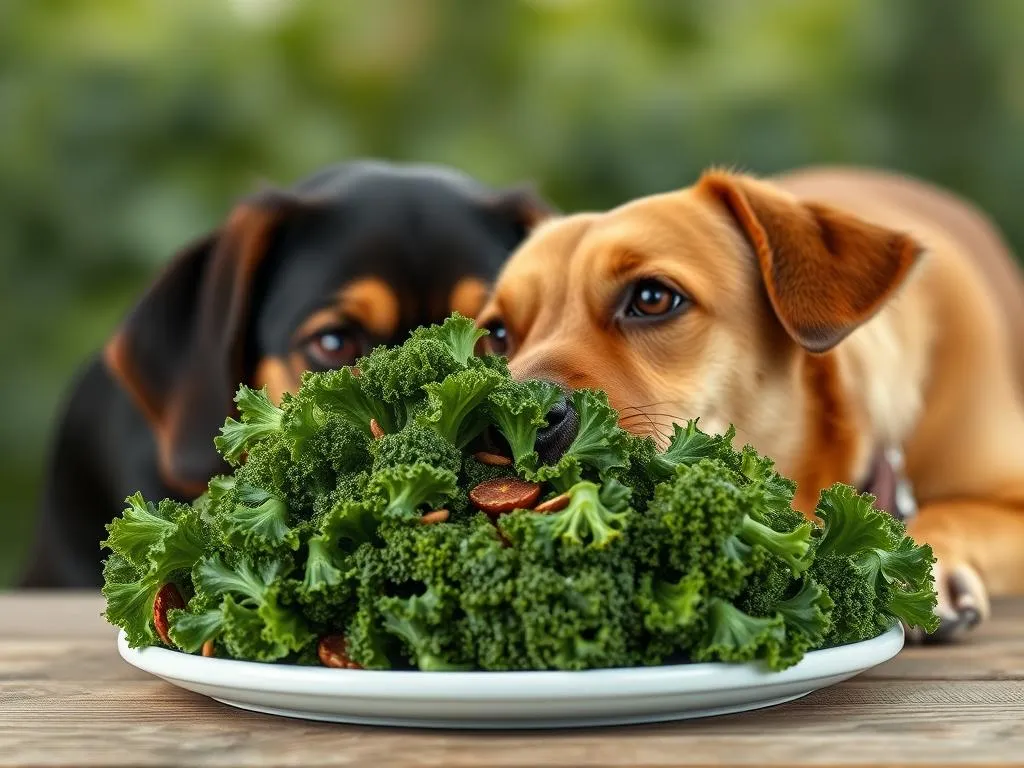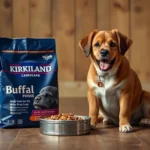
Introduction
Understanding dog nutrition is crucial for pet owners who want to ensure their furry companions live healthy, happy lives. A balanced diet plays a pivotal role in maintaining a dog’s overall well-being, affecting everything from energy levels to coat health. As our understanding of canine nutrition evolves, many dog owners are increasingly incorporating human foods into their pets’ diets. One such food that has gained attention is kale, a leafy green vegetable often heralded for its health benefits.
This raises the important question: can dogs eat kale? In this article, we will explore the nutritional benefits and potential risks associated with feeding kale to dogs, providing you with the information you need to make informed dietary choices for your pet.
Understanding Dog Nutrition
Nutritional Needs of Dogs
Dogs, like humans, require a balanced intake of macronutrients and micronutrients to thrive.
- Macronutrients:
- Proteins: Essential for growth, maintenance, and repair of body tissues.
- Fats: A source of energy and vital for healthy skin and coat.
-
Carbohydrates: Provide energy and aid in digestive health.
-
Micronutrients:
- Vitamins: Essential for various bodily functions, including immune response and bone health.
- Minerals: Important for nerve function, muscle contraction, and overall cellular activity.
Hydration is equally important; dogs should always have access to fresh, clean water to maintain optimal health.
Common Dog Food Ingredients
Commercial dog foods come in various forms, including dry kibble, wet canned food, and raw diets. When selecting dog food, it’s essential to look for key ingredients that fulfill your dog’s nutritional needs. A high-quality dog food should contain:
- Real meat or meat meal as the primary ingredient
- Whole grains or vegetables
- Healthy fats, like fish oil or flaxseed oil
Incorporating vegetables and fruits into a dog’s diet can offer additional health benefits, making them a valuable addition to a balanced canine diet.
Kale: A Nutritional Powerhouse
Nutritional Profile of Kale
Kale is often referred to as a superfood due to its impressive nutritional profile. This leafy green is packed with essential vitamins and minerals, including:
- Vitamin A: Supports vision and immune function.
- Vitamin C: Antioxidant that aids in skin health and immune response.
- Vitamin K: Crucial for blood clotting and bone health.
- Calcium: Important for strong bones and teeth.
- Antioxidants: Help combat oxidative stress and reduce inflammation.
- Fiber: Aids in digestion and helps maintain healthy gut flora.
Health Benefits of Kale for Dogs
Incorporating kale into your dog’s diet may offer several health benefits:
- Anti-Inflammatory Properties: Kale contains antioxidants that can reduce inflammation, potentially benefiting dogs with joint issues or allergies.
- Support for Immune System: The vitamins and minerals in kale can bolster your dog’s immune system, helping them fend off illness.
- Weight Management: Low in calories but high in fiber, kale can help dogs feel fuller without consuming excessive calories.
- Hydration: Due to its high water content, kale can contribute to your dog’s overall hydration.
Can Dogs Eat Kale?
Safety Considerations
While kale offers numerous health benefits, there are safety considerations every dog owner should be aware of:
- Oxalates: Kale contains oxalates, which can bind to calcium and lead to kidney stone formation in susceptible dogs.
- Gastrointestinal Upset: Some dogs may experience digestive issues, such as gas or diarrhea, when consuming kale, especially if introduced suddenly.
Recommended Serving Sizes
How much kale is safe for your dog? Portion control is essential:
- Small Dogs: 1-2 small leaves per week.
- Medium Dogs: 2-3 small leaves or a few tablespoons of chopped kale.
- Large Dogs: Up to 1 cup of chopped kale per week.
Always consider your dog’s size, activity level, and health status when determining the appropriate amount.
Preparing Kale for Dogs
To safely incorporate kale into your dog’s diet, consider the following best practices:
- Wash Thoroughly: Rinse kale under running water to remove any pesticides or dirt.
- Cook Lightly: Steaming or boiling kale can help break down tough fibers, making it easier for dogs to digest.
- Avoid Additives: Never add salt, garlic, or other toxic ingredients when preparing kale for your pet.
You can incorporate kale into your dog’s meals in various ways, such as blending it into smoothies, mixing it with their regular food, or baking it into dog treats.
Alternatives to Kale
Other Dog-Friendly Vegetables
If you’re hesitant about feeding your dog kale, several other vegetables can provide similar nutritional benefits. These include:
- Carrots: High in beta-carotene and fiber.
- Spinach: Rich in iron and vitamins A, C, and K.
- Broccoli: Contains vitamins C and K, as well as fiber.
Fruits That Are Safe for Dogs
In addition to vegetables, many fruits are safe and healthy for dogs, including:
- Blueberries: Packed with antioxidants and vitamins.
- Apples: A great source of fiber and vitamin C (remove seeds and core).
These fruits can be offered as healthy snacks or mixed into their meals.
Monitoring Your Dog After Introducing Kale
Signs of Allergic Reactions or Intolerance
When introducing any new food, including kale, it’s essential to monitor your dog for any signs of allergic reactions or intolerance, such as:
- Vomiting
- Diarrhea
- Itching or skin irritations
If you notice any of these symptoms, discontinue feeding kale and consult your veterinarian.
Consult Your Veterinarian
Always discuss dietary changes with your veterinarian, especially if your dog has pre-existing health conditions. Regular check-ups can help ensure that your dog’s diet remains balanced and supports their overall health.
Conclusion
In summary, can dogs eat kale? Yes, they can, but moderation is key. Kale can be a nutritious addition to your dog’s diet, offering numerous health benefits. However, it’s crucial to consider your dog’s individual needs, including size, health status, and any potential sensitivities.
By practicing responsible feeding and ensuring a balanced diet, you can help your furry friend lead a healthy and happy life.
FAQs
Can dogs eat kale every day?
While kale is nutritious, it should not be a daily staple in your dog’s diet. Moderation is essential, and it’s best to offer kale as an occasional treat rather than a regular part of their meals.
What should I do if my dog eats too much kale?
If your dog consumes an excessive amount of kale, monitor them for symptoms like vomiting or diarrhea. If these symptoms occur, contact your veterinarian for guidance.
Are there any dog breeds that should avoid kale?
Certain breeds or dogs with specific health concerns, such as kidney issues, may need to avoid kale due to its oxalate content. Always consult your veterinarian for personalized advice.
Can dogs eat other leafy greens?
Yes, many leafy greens are safe for dogs, including spinach, lettuce, and collard greens. However, be mindful of the oxalate content and consult your vet if you have concerns.
By understanding the nutritional benefits and potential risks associated with feeding kale to dogs, you can make informed decisions that support your pet’s health and well-being.









